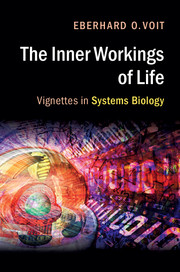Book contents
- Frontmatter
- Contents
- Appetizer
- Acknowledgments
- 1 Status: it's complicated!
- 2 I'd rather be fishin’
- 3 Whizzes and apparitions
- 4 Why?
- 5 Simply engenious!
- 6 Just a little bit
- 7 Supermodels
- 8 Close only counts in horseshoes and hand grenades
- 9 Emergence preparedness
- 10 Life without chaos?
- 11 What hath God wrought!
- 12 Tell me with whom you go and I'll tell you who you are
- 13 Time for a change!
- 14 Can't we all get along?
- 15 Love thyself and fight all others
- 16 A billion dollars for your thoughts!
- 17 The computer will see you now…
- 18 Redesigning perfect
- 19 Let's meet in the agorá!
- 20 Dessert
- Gentle jargon
- Selected further reading
- Index
1 - Status: it's complicated!
Published online by Cambridge University Press: 05 May 2016
- Frontmatter
- Contents
- Appetizer
- Acknowledgments
- 1 Status: it's complicated!
- 2 I'd rather be fishin’
- 3 Whizzes and apparitions
- 4 Why?
- 5 Simply engenious!
- 6 Just a little bit
- 7 Supermodels
- 8 Close only counts in horseshoes and hand grenades
- 9 Emergence preparedness
- 10 Life without chaos?
- 11 What hath God wrought!
- 12 Tell me with whom you go and I'll tell you who you are
- 13 Time for a change!
- 14 Can't we all get along?
- 15 Love thyself and fight all others
- 16 A billion dollars for your thoughts!
- 17 The computer will see you now…
- 18 Redesigning perfect
- 19 Let's meet in the agorá!
- 20 Dessert
- Gentle jargon
- Selected further reading
- Index
Summary
In 1635, the English scientist Robert Hooke made a fantastic discovery. Studying a slice of cork through a microscope, he discovered cavities that, as he said, used to contain the “noble juices” that once had nurtured the living tree from which the cork had been cut. He called the cavities cellulae, a Latin word for storage rooms and the root of the term that we still use today: cells. Because the cork was dead, Hooke was only able to see cell walls forming a honeycomb structure. As exciting as this discovery must have been at the time, we now know that Hooke merely saw the tip of the iceberg, actually missing most of what makes a cellula such an impressive object. Peeking into a cell today with an optical or electron microscope, we see how a whole new world of structures and molecules opens up. Most cells have a nucleus, mitochondria, and ribosomes, and there are all kinds of small organelles, vesicles, and membrane enclosures. Going even further, modern visualization and tagging techniques of molecular biology allow us to see more and finer structures, all the way down to the level of large individual molecules. A whole world, invisible to the human eye, is emerging, leaving no doubt: life is complicated!
We systems biologists love to work on real puzzles. For many of us, living systems are huge Sudokus, where some information is available, but lots of gaps in-between are to be filled in through experiments and with advanced logic that evaluates the experimental results in a systemic context. Trying to figure out how the multitudinous parts in cells work together to create something as incredible as a brain is very attractive to us. We are fully aware that we will not solve the whole puzzle in our lifetimes, but nature is modular, and every systems biologist hopes to solve a large sub-puzzle, or at least a few smaller puzzles. The intellectual challenge is the enormous complexity of every cell and organism, which requires us to invent new tools and methods, and that's what systems biology is all about.
The complexity of living systems is due to different features. First and foremost, there are just very many parts. The lowly bacterium E. coli contains between four and five thousand genes.
- Type
- Chapter
- Information
- The Inner Workings of LifeVignettes in Systems Biology, pp. 1 - 8Publisher: Cambridge University PressPrint publication year: 2016



